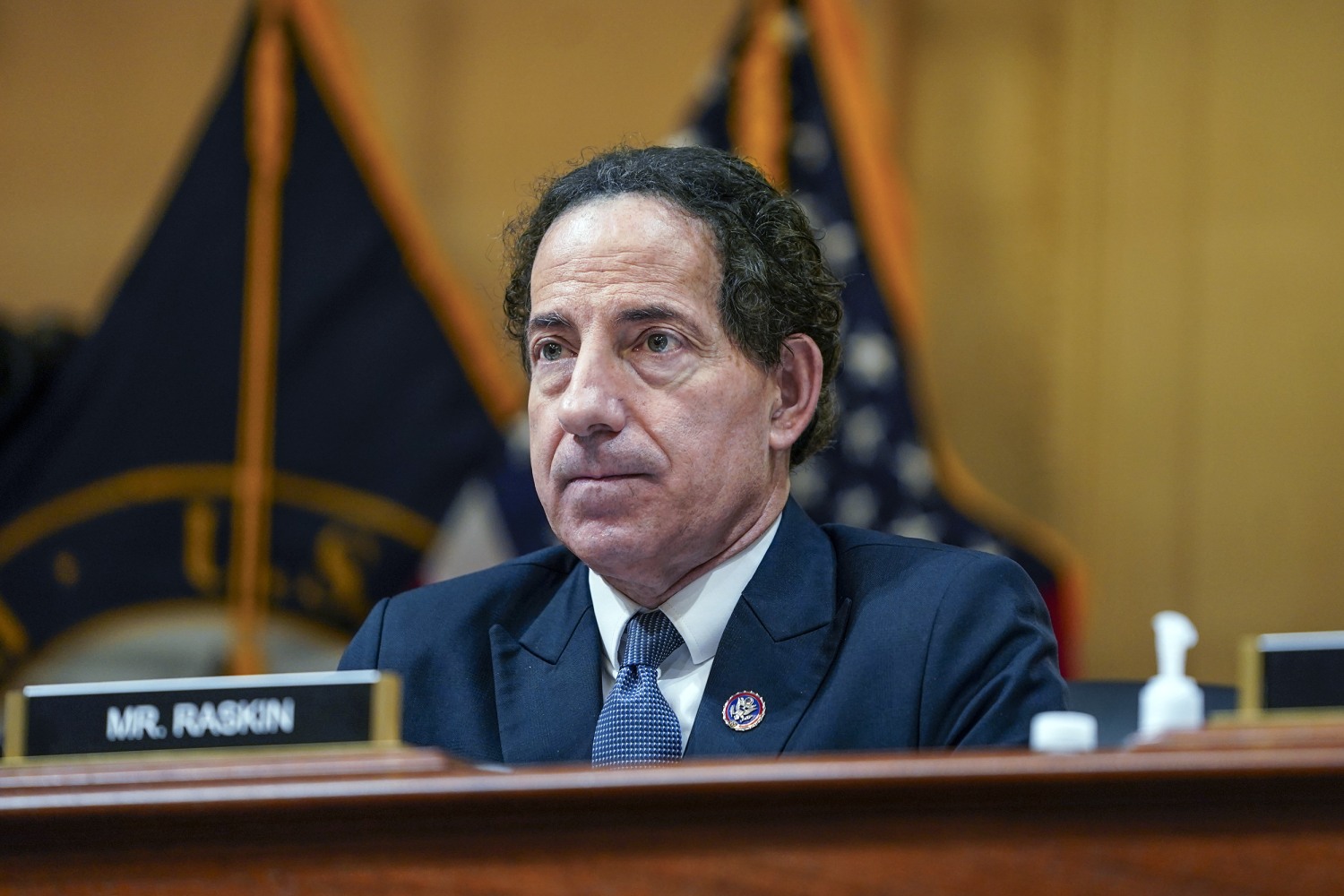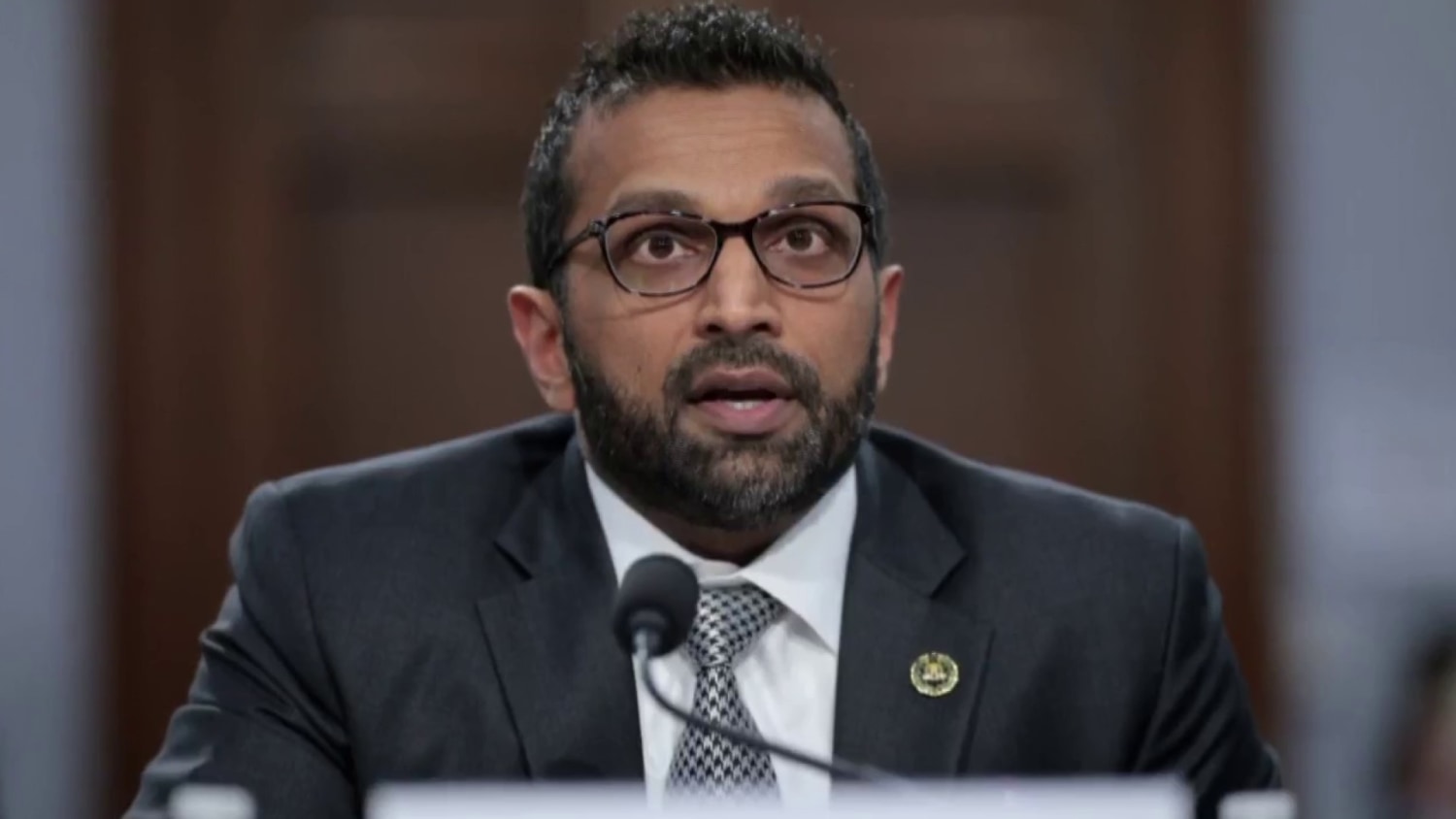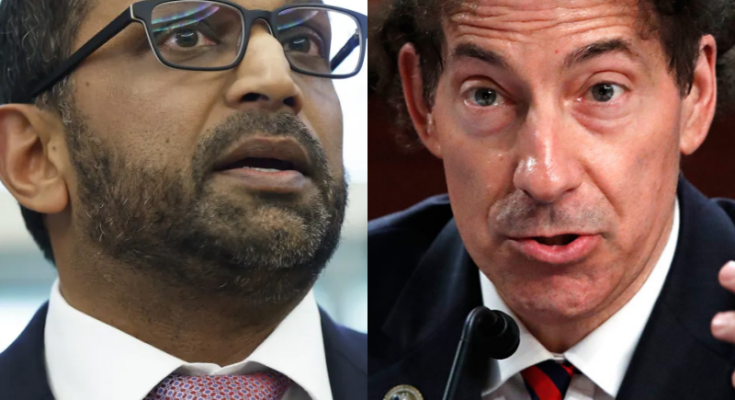Kash Patel Stuns Congress: Jaime Raskin Exposed in Historic Hearing
Washington, D.C. — In a scene more gripping than any political thriller, the House Judiciary Committee erupted into chaos yesterday as Kash Patel, former chief investigator, unveiled a mountain of evidence implicating Congressman Jaime Raskin in a web of corruption, cover-ups, and ethical violations. The hearing, broadcast live across every major network, left Raskin—once hailed as a constitutional scholar and defender of democracy—utterly speechless and facing the prospect of federal prison.
.
.
.

The Moment That Changed Everything
It began innocuously enough: Patel entered the committee room, six boxes of documents stacked behind him, the culmination of five months of relentless investigation. The air was tense, the room packed with reporters, lawmakers, and spectators eager for drama but unprepared for the spectacle that would unfold.
At the center of it all sat Jaime Raskin, the Maryland congressman, his signature bow tie and wire-rimmed glasses reflecting the camera lights. Surrounded by high-priced lawyers and communications advisors, Raskin wore the confidence of a man who believed himself untouchable.
But that confidence was shattered in minutes.
Raskin’s Defiant Stand
Before the chairman could call the hearing to order, Raskin demanded the floor. “This committee is being used for political persecution,” he declared, voice booming with the practiced authority of a law professor. “Another Trump lackey, another witch hunt, another attack on those of us who dared to defend democracy.”
His supporters erupted in applause. Raskin, feeding off the energy, recounted his decades teaching constitutional law and his role in defending the Capitol on January 6th. “Truth doesn’t bend to power,” he insisted. “Justice doesn’t bow to tyrants. And I will not be silenced.”
It was a masterful performance—but Patel was unmoved.
The Evidence Unveiled
Patel quietly opened his briefcase, the click of its latches echoing in the sudden hush. From it, he produced a single folder and began his methodical dismantling of Raskin’s legacy.
“Congressman Raskin,” Patel said, voice low but clear, “I appreciate your opening statement. Very passionate, very theatrical, very rehearsed. But I’m not here to debate constitutional theory. I’m here because you committed crimes—multiple felonies—while hiding behind the Constitution you claim to revere.”
Raskin scoffed, but Patel pressed on, revealing a confidential FBI memo from January 15, 2021—nine days after the Capitol riot. The memo, signed by Raskin himself, stated unequivocally: No evidence of coordinated insurrection. Spontaneous riot. Not planned coup attempt.
Yet, as Patel showed, Raskin spent the following weeks on national television, claiming the opposite: that the attack was coordinated, planned, and orchestrated by President Trump. The contradiction was damning.
The Room Turns
As Patel laid out the timeline—FBI briefing, Raskin’s signature, subsequent media appearances—the committee room grew tense. Raskin’s face drained of color. Murmurs rippled through the gallery, and even loyal supporters began to look unsettled.
Patel continued, producing emails and internal memos showing how Raskin buried contradictory testimony, suppressed video evidence, and manipulated the narrative for political gain. Notably, Patel revealed that Raskin’s own staff had flagged Capitol Police Sergeant Torres’ testimony as “problematic” because it contradicted the coordinated attack narrative. Raskin’s response? “Archive it. Focus on testimony that supports the narrative.”

Whistleblowers Step Forward
The drama escalated when Sergeant Torres, a 23-year veteran of the Capitol Police, stood up in the gallery. His voice trembling, Torres described how he had been reassigned to parking lot duty after refusing to alter his testimony at Raskin’s urging. Patel then played a recording—legally obtained in Maryland—of Raskin pressuring Torres to “emphasize different aspects” and warning him about the consequences for his career.
The committee room exploded. Reporters shouted, advisers wept, and Raskin’s wife, Sarah Bloom Raskin, walked out, her face pale and resolute.
The Money Trail
Patel’s investigation didn’t stop at cover-ups. He revealed a detailed financial timeline showing the Raskin family’s income spiking to $5.4 million over four years—coinciding with impeachment proceedings and the January 6th investigation.
Sarah Bloom Raskin’s legal fees from progressive advocacy groups tripled. Raskin’s children launched consulting firms, netting nearly half a million dollars from organizations tied to anti-Trump activities. Raskin himself earned over $2 million in book advances and $3 million for paid speeches, some fetching as much as $50,000 apiece.
“Duty didn’t call, Congressman,” Patel declared. “Money did. $5.4 million—that’s what duty paid.”
The Committee Cracks
As Patel presented text messages showing Raskin coordinating with media outlets to push the “insurrection” narrative, the committee fractured. Representative Jared Golden of Maine stood up, voice shaking, and accused Raskin of lying to Congress and the American people. “I cast one of the most important votes of my career based on your lies. I’m calling for your expulsion from Congress.”
Three other Democrats followed him out. The dam was breaking.

The Final Blow
Patel listed eight felony charges against Raskin: obstruction of justice, perjury, conspiracy to deprive civil rights, witness tampering, and unauthorized disclosure of classified information. The potential sentence: 85 years in federal prison.
Patel produced Raskin’s own textbook on constitutional law and read aloud passages condemning prosecutorial misconduct and suppression of exculpatory evidence. “You became the tyranny,” Patel said softly. “You became everything you taught your students to fight against.”
Former students entered the room, announcing that American University was removing Raskin’s name from its law program and recalling his textbooks.
Collapse and Consequence
The hearing ended with FBI agents serving subpoenas to Raskin and his family. Outside, hundreds of protesters—Raskin’s own constituents—demanded accountability. Social media exploded. #RaskinLied trended worldwide.
Raskin’s wife announced her cooperation with authorities and filed for separation. His children returned consulting fees and sought immunity. His staffers packed boxes, some looting supplies. His senior aide admitted to years of cover-ups, now regretted.
Raskin was left alone, his legacy dismantled piece by piece. In the coming days, he would be expelled from Congress, indicted on eight federal felonies, disbarred, and stripped of his honors. His books were pulled from shelves, his name erased from buildings, his family gone.
The Aftermath
As the sun set over Washington, Raskin sat in darkness, awaiting the consequences of his choices. The constitutional scholar had become the constitutional criminal.
In the months that followed, the Justice Department reopened over 200 January 6th cases, providing exculpatory evidence to defense attorneys. Seventy-three convictions were overturned or sentences reduced. Congress passed new ethics rules—the “Raskin Rule”—to prevent future abuses.
A year later, Kash Patel reflected, “This didn’t need to happen. Raskin had opportunities to tell the truth, to do the right thing. He chose corruption over integrity, money over justice. Justice was served. It always is, eventually.”
Jaime Raskin now serves his sentence at FCI Cumberland in Maryland. He will be eligible for release in 2071, at age 106. His Wikipedia page is a cautionary tale: “James Raskin is a former US representative convicted of eight federal felonies related to suppressing evidence and corrupting congressional investigations.”
America watched as justice unfolded, a reminder that no one—not even the most celebrated defenders of democracy—is above the law.



